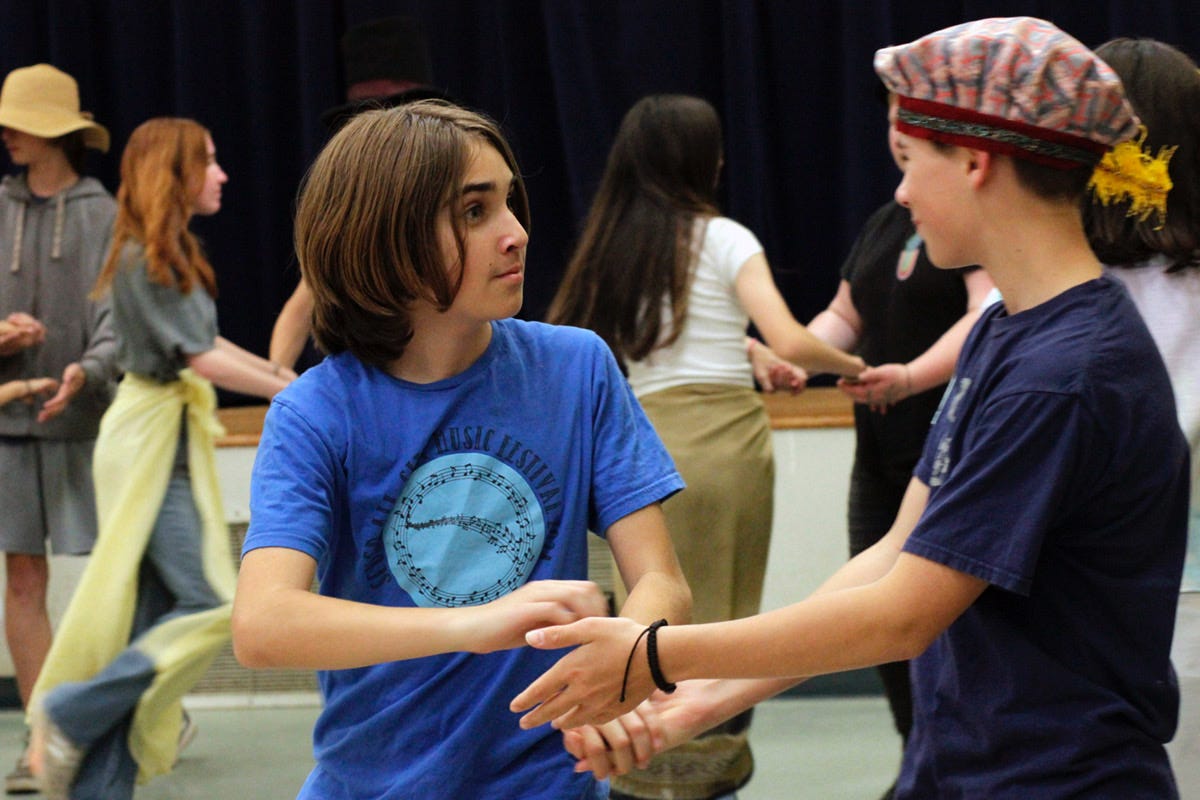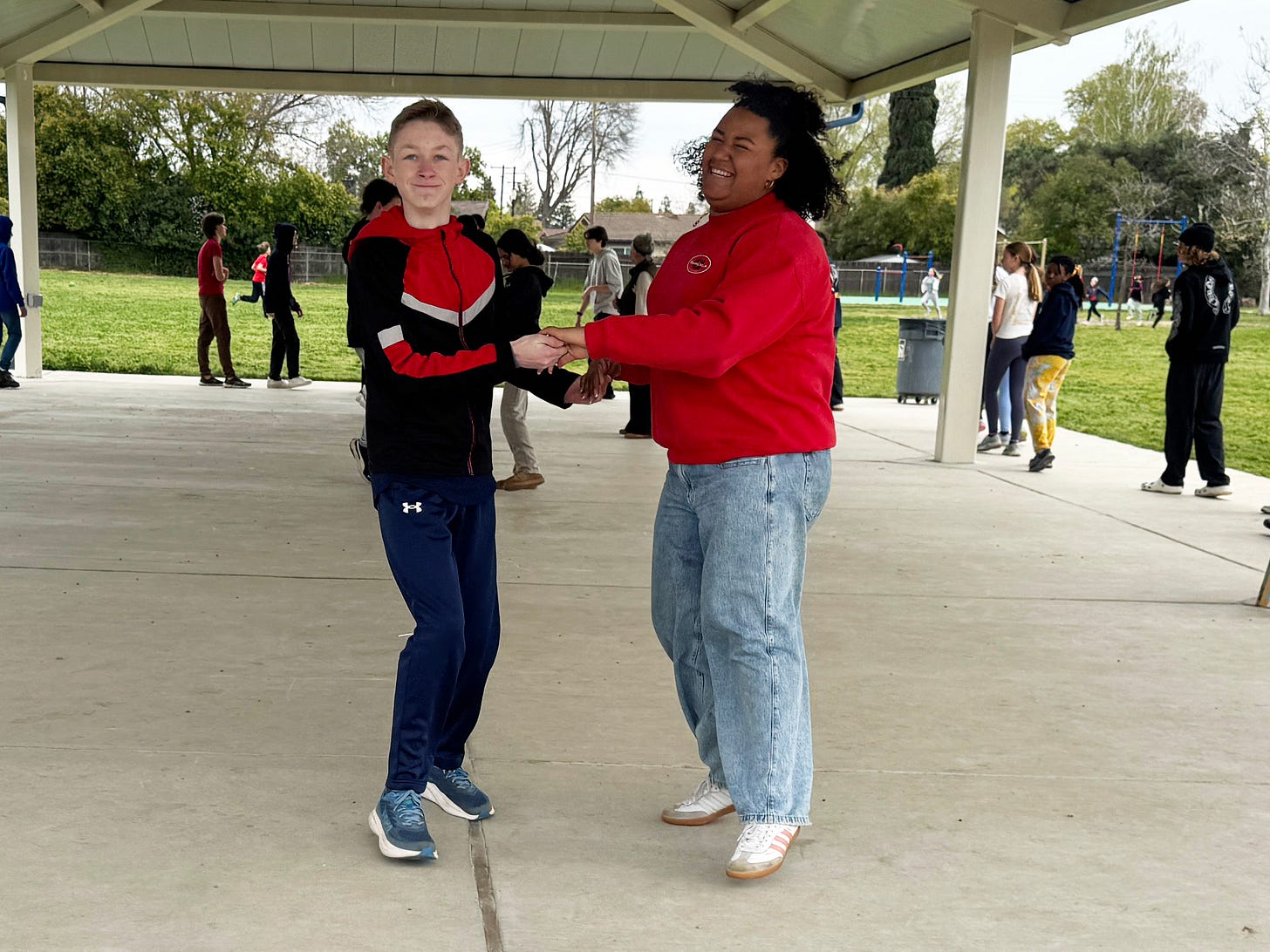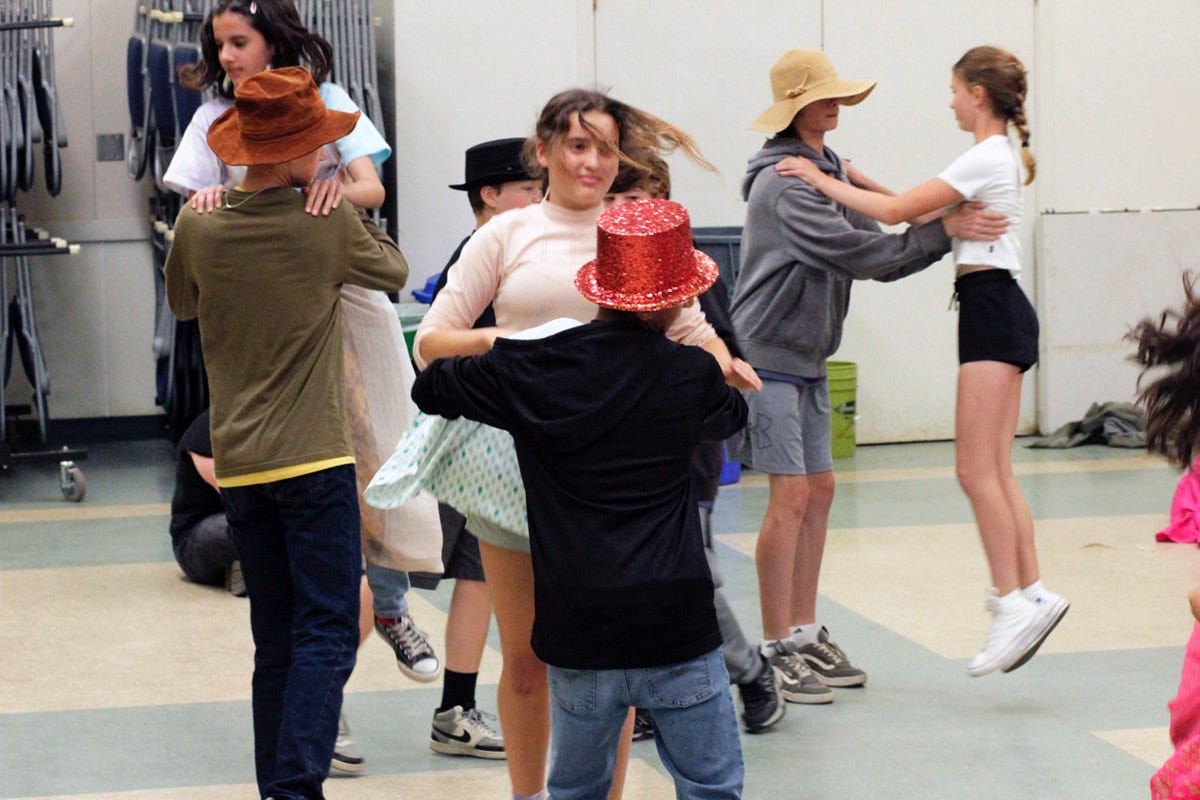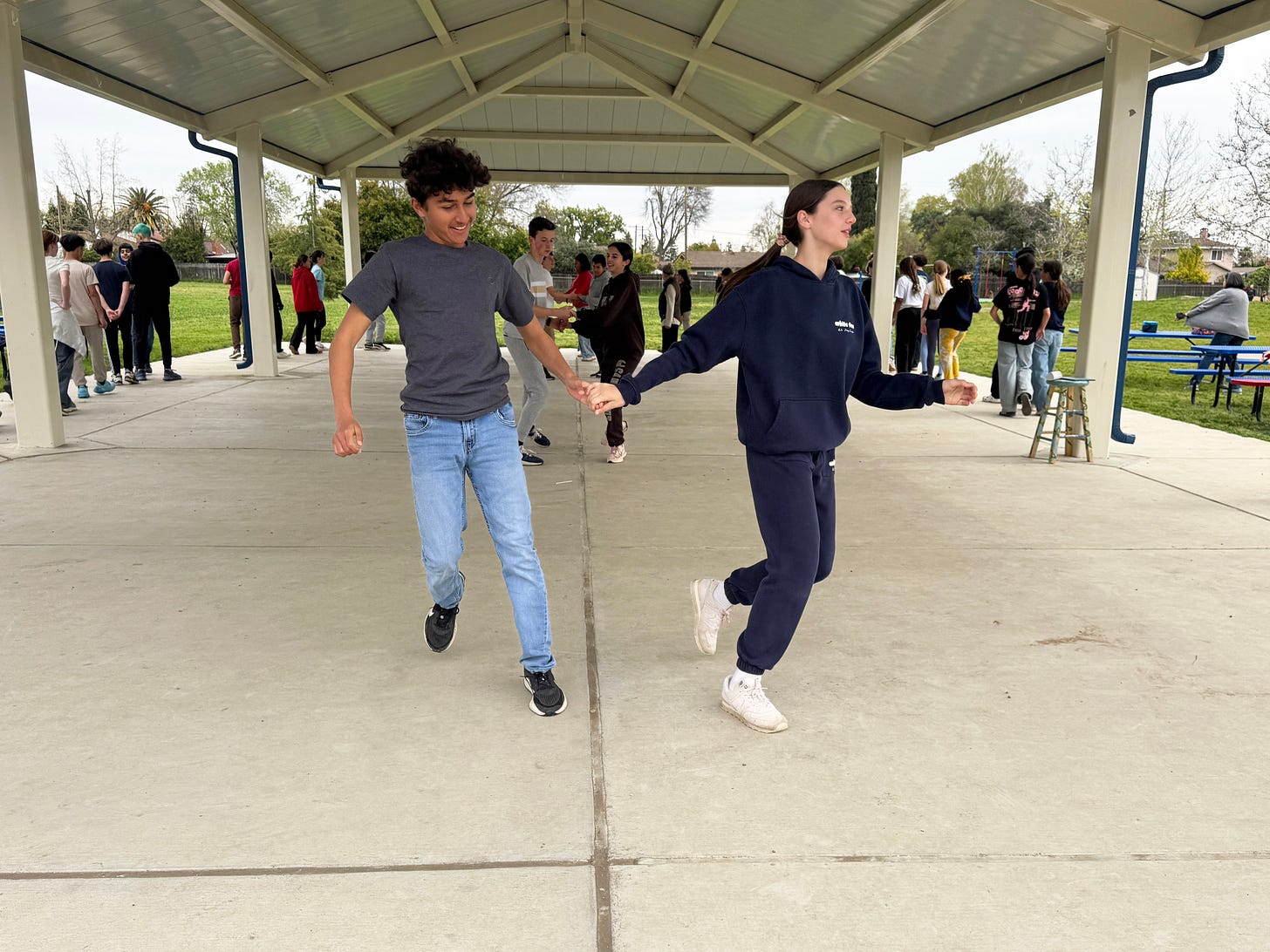Why They Danced
A Class Teacher’s Reflection on Four Years of Dance as Movement with Valerie Baadh Garrett
During a time when our students had been masked, distanced, and disconnected, dance returned to our curriculum like breath. Not just a subject, but a form of healing.
Over four years of movement, rhythm, and transformation, I watched my students reclaim parts of themselves they didn’t know they’d lost — and grow into people they didn’t yet know they could be.
Why They Needed to Dance
Adolescence brings so many challenges: rising hormones, shifting identities, growing self-awareness. Add to that the isolation of pandemic years, and our students were longing for something they couldn’t name. What Valerie brought them through dance wasn’t just physical engagement. It was a social framework — a way to be close to others, to move through awkwardness and attraction, and to be physical with grace and parameters.
Dancing offered them a space to connect, to build relationships, and to challenge themselves. Students learned to be pleasant and present with every partner, not just their favorites. That particular element deepened the soul of our class community. Whether it was a Renaissance bransle or East Coast Swing, these dances gave students a way to move with others, to lead and follow, and to laugh, stumble, learn, and start again.
What I Witnessed Over Time
What began as tentative steps became a kind of joy that could not be contained as years went by. Students who once groaned at the mention of dance class in fifth grade were begging for it in eighth. There was something in the structure, the movement, the music, and Valerie’s clear artistic direction that met them in exactly the way they needed.
There were breakthroughs. Students who had treated dance like a chore in fifth grade began to discover hidden strengths. One student in particular, a boy of shorter stature, evolved from reluctant participant to featured dance performer in our final class play. At first, it seemed as if he would have preferred intense tag games or proprioceptive activity over the subtlety of footwork and posture. But over the years, something shifted. He learned to hold form, to guide any partner with confidence, to listen for rhythm, and to take pride in precision. By eighth grade, he was radiant on the dance floor — leading with strength and joy, dancing with partners of any height, and entirely present in his body and role.
Others found confidence in ways the classroom never revealed. A student who struggled with fine-motor coordination and rarely excelled in games was now focused, resilient, and engaged with the Foxtrot. She may have once avoided partnered movement activities in younger grades, but now moved gracefully, reciprocating rhythm and movement, even standing out as a featured dancer in our final 1930’s-era play wearing a glamorous costume. Watching her take that stage, embodying confidence she never thought she had, was a moment of quiet triumph for us all.
Dance as Social and Cultural Bridge
Dance was also a living history. It brought depth to our studies, making abstract historic figures tangible. Through posture, gesture, and rhythm, students discovered for example, how powerful a woman of the Renaissance could be, how leadership could be felt in the hand of a partner, or how a social convention could hold a culture together.
Take, for example, the Renaissance Bransle known as "Toss the Duchess" or Bransle de l'Official. During the eight singles left section of the dance, historically, gentlemen would gently guide their partners — placing hands at the lady’s side while the lady placed her hands on the gentleman’s shoulders — and pass them to the next partner with a graceful turn.
The intention was never to "toss" literally, but to transfer the partner with elegance and timing, allowing everyone to rotate and gain a new partner. This movement, playful and lighthearted, mirrored the social choreography of the time: learning grace, timing, respect, and adaptability.
At a cultural moment when our students were learning to question heritage and history, dance opened nuance. Rather than rejecting dances of archaic eras as distant, or no longer relevant, they learned to see the hidden lives within them. Through movement, they found common human stories. They understood that joy, restraint, and power were carried in the small gestures of people navigating their time — not unlike themselves.
The Teaching and the Choreography
Valerie began classes with rhythm, tuning them in to her and to one another. She gave precise demands in the warm-ups, called for full attention, and they gave it. Her structure empowered them: dance captains demonstrating steps, small groups performing while others observed, and respectful peer and teacher feedback was the norm. These patterns kept every student engaged, whether leader or follower.
Props and costumes helped too. Hats for Renaissance dances added a touch of whimsy and reverence. Playful as it was, it brought seriousness to their roles. They loved it.
She also used modern music to link past and present, letting them feel cool while dancing older steps. Big band tunes, jazz, pop songs — all found their place in the dance classroom, keeping the tradition alive and alive in them.
They learned the Foxtrot — a graceful ballroom dance characterized by long walking movements and short, quick steps. The slow-slow-quick-quick rhythm, danced in 4/4 time, gave students the experience of gliding across the floor, rising and falling like waves. It required trust and attention to one’s partner — a physical conversation.
The East Coast Swing, a simplified version of Lindy Hop, brought another layer of fun and social energy. With its six-count basic step and triple or single time variations, it connected them to the vibrant dance halls of the 1940s, letting them tap into an era of joy and resilience.
As Valerie has said: “I came to understand movement has a larger reason for being; it helps develop our brains, bodies and social connections.” And for her, “It’s the connection to music and the intersection of movement with rhythm and melody.”
Over the months and years, even the most reticent of my students were awed by Valerie as a dancer and mover and fully engaged by her masterful teaching and choreography.
What I Learned As a Teacher
Dance allowed me to see my students in a new light. I saw leadership where I hadn’t before. I saw persistence, grace, playfulness, and depth. Students who hesitated to speak in class found their voice through their bodies. The quiet ones learned to step forward. The boisterous ones learned to listen and sync.
From the sidelines, I danced too. They saw me as part of it, not just an observer. My collaboration with Valerie in the choreography for our seventh and eighth grade plays brought a sense of shared vision to the class. Dance was not an add-on. It became a thread through everything. The students brought that seriousness and intention to all other aspects of the class play public performances — not just their lines, but their movement, their presence, and their connection.
A Closing Reflection
Dance held us through a turbulent and stifling time. It reconnected what had been disconnected — in the body, in the heart, in our community. Valerie didn’t just teach dance. She created a space for self-hood, partnership, and transformative growth in her dance classes. In their joy, in their elegance, in their growth, the students showed us something profound:
They needed to dance. And they always will.
Thank you, Jennifer, for your kind words and clear perception of your students and the effects of the dancing over the years. Best wishes as you refresh yourself this summer, and meet your new class of first graders this fall. Lucky children! - VBG










